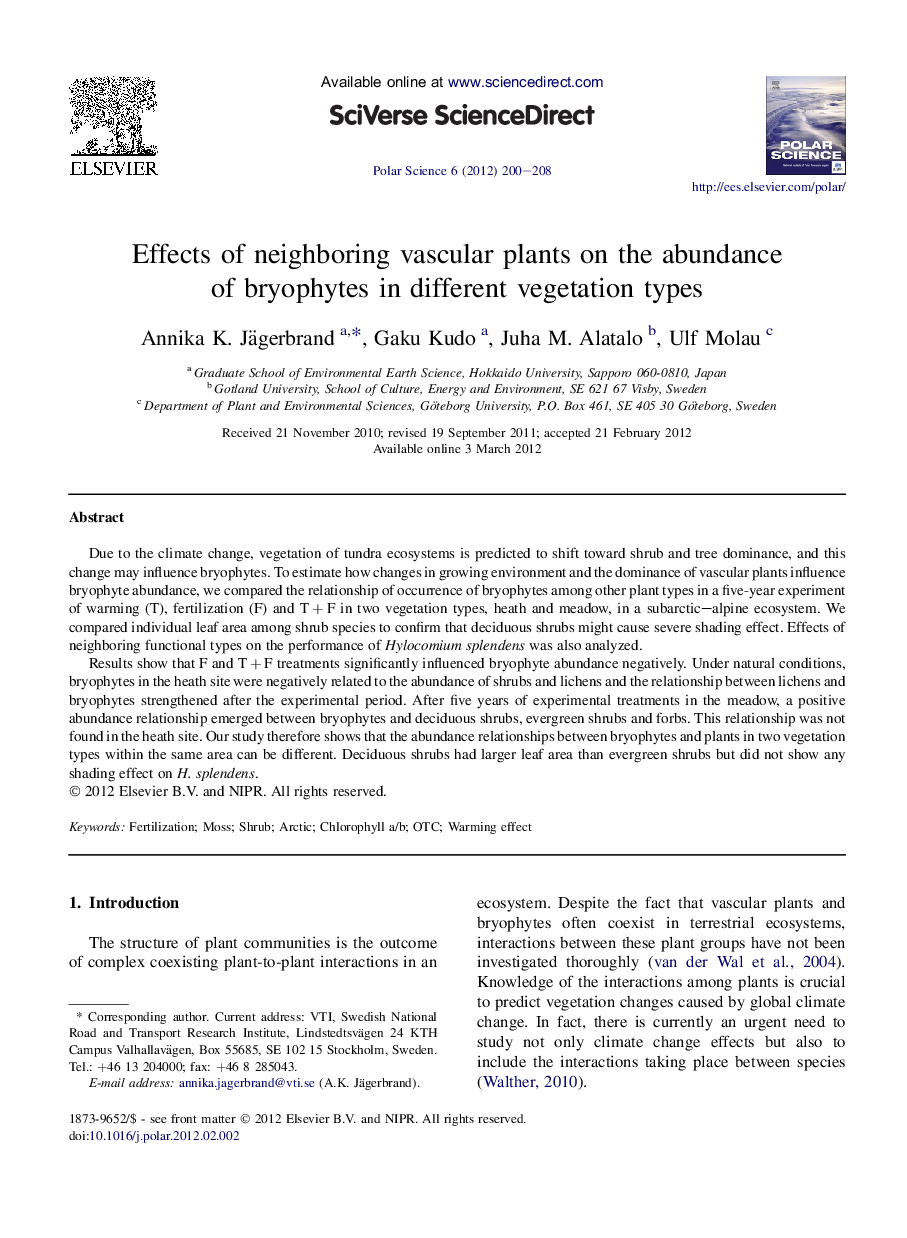| Article ID | Journal | Published Year | Pages | File Type |
|---|---|---|---|---|
| 6431553 | Polar Science | 2012 | 9 Pages |
Due to the climate change, vegetation of tundra ecosystems is predicted to shift toward shrub and tree dominance, and this change may influence bryophytes. To estimate how changes in growing environment and the dominance of vascular plants influence bryophyte abundance, we compared the relationship of occurrence of bryophytes among other plant types in a five-year experiment of warming (T), fertilization (F) and TÂ +Â F in two vegetation types, heath and meadow, in a subarctic-alpine ecosystem. We compared individual leaf area among shrub species to confirm that deciduous shrubs might cause severe shading effect. Effects of neighboring functional types on the performance of Hylocomium splendens was also analyzed.Results show that F and TÂ +Â F treatments significantly influenced bryophyte abundance negatively. Under natural conditions, bryophytes in the heath site were negatively related to the abundance of shrubs and lichens and the relationship between lichens and bryophytes strengthened after the experimental period. After five years of experimental treatments in the meadow, a positive abundance relationship emerged between bryophytes and deciduous shrubs, evergreen shrubs and forbs. This relationship was not found in the heath site. Our study therefore shows that the abundance relationships between bryophytes and plants in two vegetation types within the same area can be different. Deciduous shrubs had larger leaf area than evergreen shrubs but did not show any shading effect on H. splendens.
